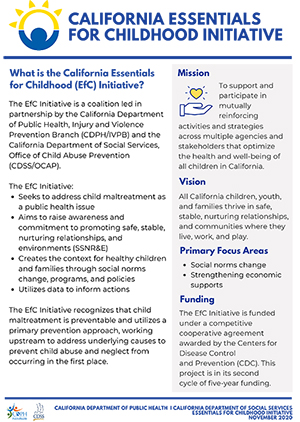
|
Essentials for Childhood Initiative One-Pager (PDF). This document is intended for stakeholders and members of the public and was designed to describe the Essentials for Childhood (EfC) Initiative, the mission, vision, primary focus areas, and how the Initiative's coalition and four subcommittees function.
|
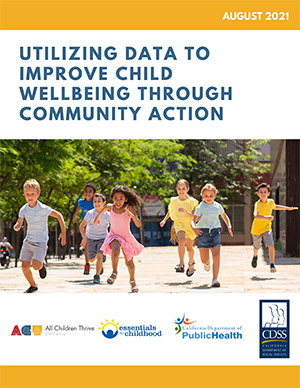
|
Utilizing Data to Improve Child Wellbeing Through Community Action. The purpose of this document is to identify best practices in utilizing data to monitor and evaluate child adversity, health, development, and wellbeing in order to build community support and create policy, systems, and environmental change. This resource was created in partnership by
All Children Thrive - California and the California Department of Public Health, Injury and Prevention Branch (CDPH/IVPB) and the California Department of Social Service, Office of Child Abuse Prevention’s (CDSS/OCAP)’s, EfC Initiative.
|
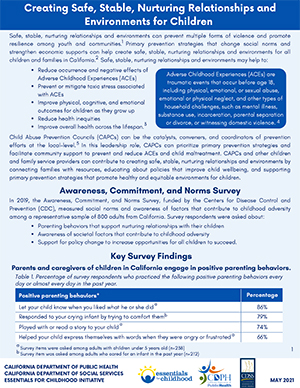
|
Creating Safe, Stable, Nurturing Relationships and Environments for Children. This resource is intended to elevate primary prevention strategies that support creating Safe, Stable, Nurturing Relationships and Environments (SSNR&Es) for children and highlight 2019 data from the Awareness, Commitment, and Norms Survey provided by the Centers for Disease Control and Prevention (CDC).
|
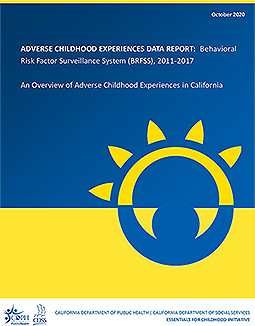
|
Adverse Childhood Experiences Data Report: Behavioral Risk Factor Surveillance System (BRFSS), 2011-2017: An Overview of Adverse Childhood Experiences in California (PDF). The purpose of this resource is to report state and county prevalence of Adverse Childhood Experiences (ACEs) in California; describe ACEs-related geographic and demographic disparities; and to offer details on the impact of ACEs on mental health, behavior, and chronic disease This data report was created in partnership by the University of California, Davis.
|
|
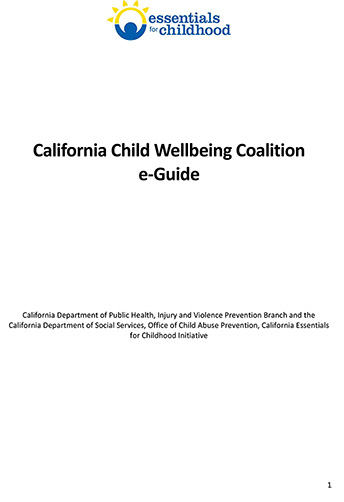
|
California Child Wellbeing Coalition e-Guide (PDF). This digital resource intended to support state and local public health programs, child-serving systems, non-profits, and philanthropic organizations that are interested in collaborating with organized groups at the local-level who are working to achieve child wellbeing through policy, systems, and environmental (PSE) change. The e-Guide is intended to be a living document and does provide an exhaustive list of all coalitions in California; if you have any questions, concerns, or suggested updates, please contact the EfC Initiative Project Team at:
ivpb@cdph.ca.gov.
|
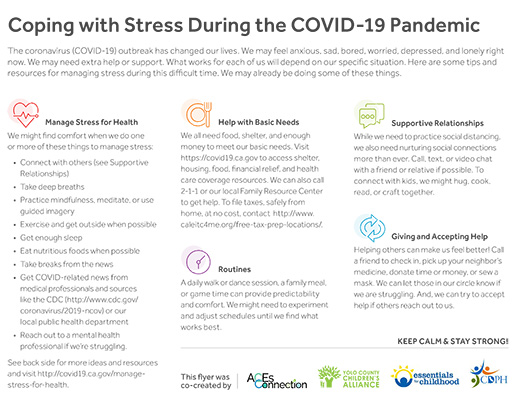
|
Framework for Coping with Stress During the COVID-19 Pandemic. This material is intended for Californian families experiencing the severe economic consequences resulting from novel coronavirus, COVID-19, and shares resources and offers supportive information on ways Californians can take care of themselves and their families during the pandemic. This resource was created in partnership with
ACEs Connection, and the
Yolo County Children's Alliance and is available in English (PDF coming soon) and
Spanish (PDF); both versions are
ADA compliant.
|
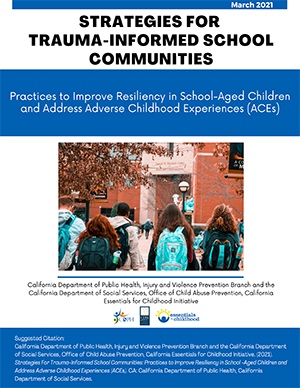
|
Strategies for Trauma-Informed School Communities: Practices to Improve Resiliency in School-Aged Children and Address Adverse Childhood Experiences. This resource is intended to assist state and local public health programs, child-serving systems, non-profits, and philanthropic organizations in their efforts to educate about the need for trauma-informed school policies and practices that improve resiliency in school-age children and youth. |
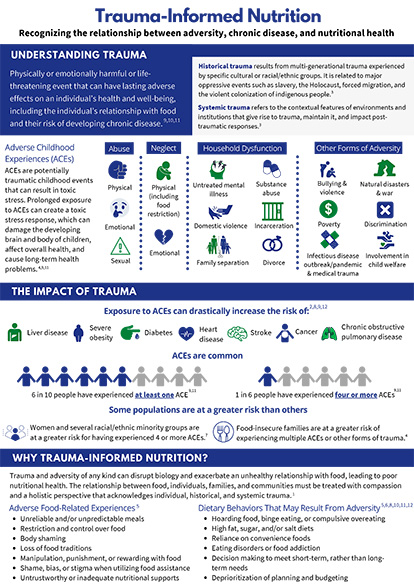
|
Trauma-Informed Nutrition: Recognizing the Relationship between Adversity, Chronic Disease, and Nutritional Health.This factsheet is intended for Registered Dietitians (RDs) and was designed to support and describe the connection between Adverse Childhood Experiences (ACEs), the impacts of trauma and its relationship to chronic disease, and trauma-informed nutrition practices. This factsheet was developed through a collaborative partnership with CDPH's
Nutrition Education Obesity Prevention Branch (NEOPB).
|
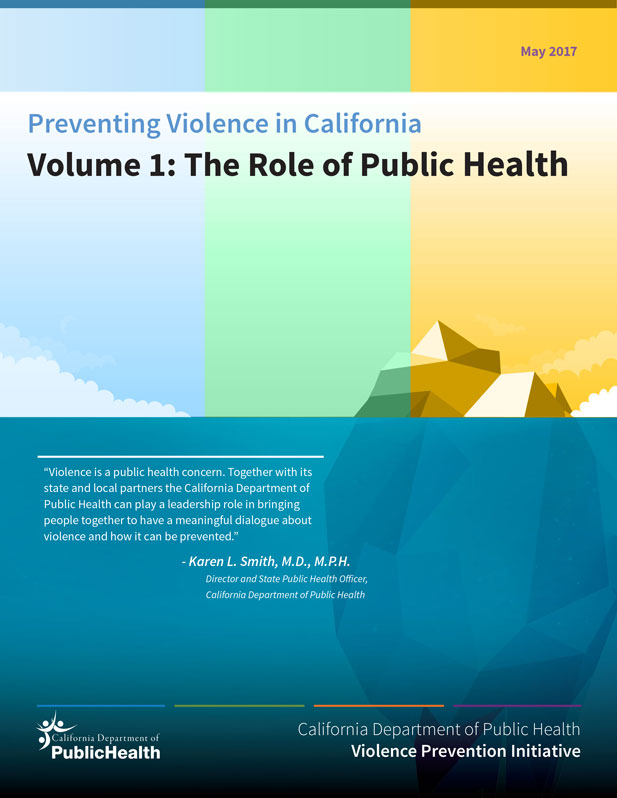
|
Preventing Violence in California Volume 1: The Role of Public Health (PDF). This report provides an introduction to the complex and multifaceted issue of violence and a high level overview of the public health role and approach to violence prevention. This report was developed by CDPH's
Violence Prevention Initiative.
|
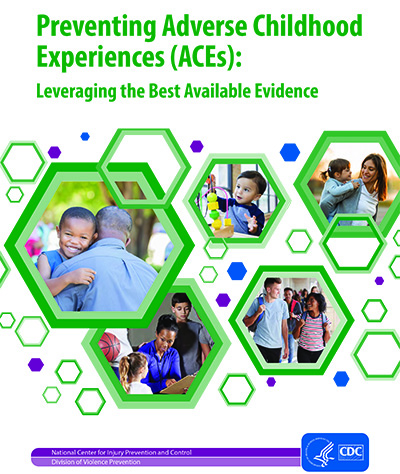
|
The Centers for Disease Control and Prevention Division of Violence Prevention released a new technical package in September 2019 for preventing adverse childhood experiences (ACEs). Preventing Adverse Childhood Experiences (ACEs): Leveraging the Best Available Evidence is available online now from the CDC's website.
|

|
California Essentials for Childhood Case Study: Collective Impact Through Strategic Opportunities. This case study published January 2019 describes the formation, process, and implementation of the California Essentials for Childhood (EfC) Initiative. Written by research scientists with the California Department of Public Health, Steve Wirtz and Marissa Abbott, this paper makes note of both major successes and challenges of the EfC Initiative, as well as lessons learned and future directions. To request a copy of this study, email
ivpb@cdph.ca.gov |